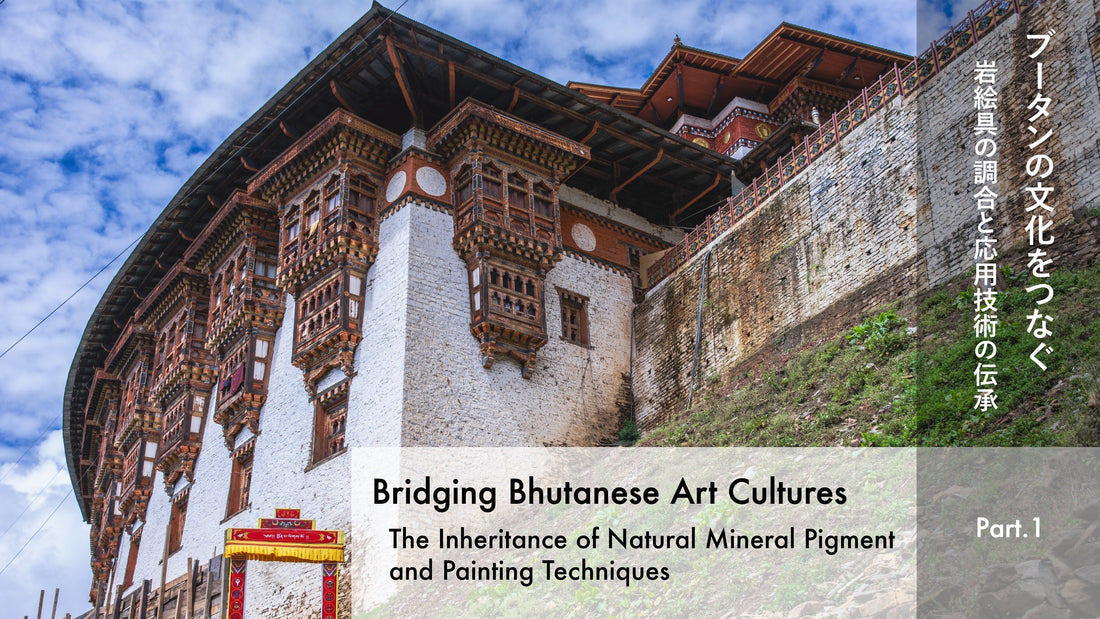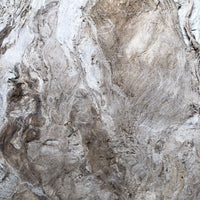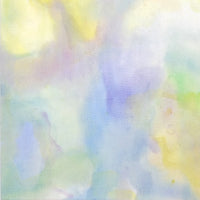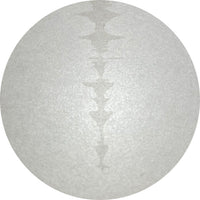In September 2024, PIGMENT TOKYO was invited by the Department of Culture and Dzongkha DevelopmentI of the Kingdom of Bhutan to give a lecture at the “Workshop on Mineral Pigment Paint Preparation and Application Techniques” held in Thimphu, the capital city of Bhutan.
Bhutanese and Nepalese traditional painting experts and PIGMENT TOKYO gave lectures and demonstrations about mineral pigments and their painting techniques.
This article will focus on the background of the Tango Monastery (an important cultural asset in Bhutan) restoration project and the reasons why PIGMENT TOKYO were invited to the workshop.
In the second article, we will provide a detailed overview of the workshop program.
In Bhutan, the culture is heavily influenced by Tibetan Buddhism, particularly the teachings of Vajrayana Esoteric Buddhism. This influence is evident in daily life, as well as in society and politics.
The historic arts of Bhutan play an important role not only in religious ceremonies and festivals, but also in art and architecture.
*Dzongkha... Official language of Bhutan. It is an important and symbolic element of Bhutanese culture and identity. It is also used in official settings such as education, government and media. It is deeply connected with Bhutanese Buddhist culture and has its unique writing system while belonging to the Tibetan family of languages.
The Background of the “Workshop on Mineral Pigment Paint Preparation and Application Techniques”
The Department of Culture and Dzongkha Development (DCDD), the government organization in the Kingdom of Bhutan, is in charge of formulating policies for protecting and preserving cultural heritages to promote their traditions and cultures.
It is responsible for realizing a harmonious and progressive society through protecting and developing the Kingdom of Bhutan's unique cultural identity. Moreover, Dzongkha, the official language, is deeply connected to Bhutanese culture and religion beyond linguistic aspects.
The Division for Cultural Properties of the DCDD, which hosted the workshop program, was established in 1981 by His Majesty the Fourth Druk Gyalpo Jigme Singye Wangchuck under his Royal Command.
The restoration of the Tango Monastery, an important cultural heritage site in Bhutan, became the focus of a conservation and restoration project by the DCDD.
The monastery, which was built more than 300 years ago, had been severely damaged by natural disasters and deterioration over time, and its restoration was an urgent task.
In addition to the structures, the interior had many damaged ancient murals of Menulog, a traditional Bhutanese style of painting from the 17th century. Therefore, it was necessary to restore both the structures and the murals.
Menlug is one of the traditional Thangka paintings of Tibetan Buddhism, which mainly depicts Buddhist themes such as Buddhas, Bodhisattvas, deities and mandalas, while strongly reflecting the religion, culture and history of Bhutan and Tibet.
Menlug-style Thangka often indicates a traditional painting technique or style unique to Bhutan that has colorful and detailed designs. They are internationally acclaimed for their artistic value and technical aspects, as well as for their profound expression of Bhutanese culture and beliefs.
The murals in the original Tango Monastery were painted on plaster walls with natural mineral pigments or colorants derived from natural sources.
However, in recent years, synthetic pigments, mud paints and acrylic paints have been used in the paintings, murals and restoration work in Bhutan, and most of the painting materials used are imported from Nepal and India.
Tashi Lhendup, a DCDD conservator and leader of the monastery restoration project, wishes to use durable natural mineral pigments and animal glue for the restoration in terms of long-term protection of artwork and cultural treasures.
Therefore, to solve the issue of no access to natural mineral pigments in Bhutan and educate the highly skilled Bhutanese restorers and painters but unfamiliar with those materials, he invited experts from abroad to organize workshops for them.
The lecturers are Tashi Lhendup (who is in charge of the Tango Monastery Restoration Project and this DCDD’s workshop program), Dasho Karma Ura (Director of the Bhutan Research Center and GNH Research, who is also an artist of traditional and contemporary art) and Sudarshan Suwal (a Pauva* specialist from Nepal with whom the DCDD has long been in relationship).
This time, PIGMENT TOKYO was invited to share our expertise in Japanese traditional art techniques and high-quality art materials.
Bhutanese painters and restorers participated in this workshop in order to learn about Nepalese and Japanese art techniques and materials, and to deepen their understanding of the importance of materials and the properties of natural mineral pigments.
* Pauva... Paintings on the subject of Buddhist and Hindu deities and Buddha by Newar painters, an indigenous tribe in the Kathmandu Basin of Nepal.
Tango Monastery

Tango Monastery
Tango Monastery is located about 17 km north of the capital Thimphu, halfway up Cheri Mountain (about 2,600 m above sea level) in the Paro district.
This monastery holds significant importance in Bhutanese Buddhism and its history, and is recognized as a cultural heritage site, regarded as a sacred ground.
After being established in the 13th century, it was reconstructed in its present form in 1689 by Tenzin Rabgye, the fourth Druk Desi*, who contributed greatly to the development of Bhutanese culture and Buddhism.
The Institute of Advanced Vajrayana Studies, a Buddhist academic institution, was established and operates as a monastic school at the advanced educational level which has the aim of passing on the traditional doctrines to the next generation.
Before the monastery was built, the caves on the site were places where saints practiced asceticism and meditation. Even today, it has been passed down as a space of faith to calm the mind and seek tranquility.
The architecture with its topography and integration with nature was built in the traditional Bhutanese Zong style. The solid, semi-circular, curved white exterior walls and carved wooden window frames speak of fine craftsmanship.
*Druk Desi ... a title of a leader with secular and political power in Bhutan in the 17th-19th centuries.

The name “Tango” comes from a rock that resembles a horse's head.
The word “Tango” means horse's head in Dzongkha.
It originated from Hayagriva, one of the main deified deities in Bhutanese Buddhism, who is a horse-headed Buddha and symbolizes wisdom and compassion.

Furthermore, art is deeply ingrained in the religious background.
For example, Zorig Chusum*, a term that refers to 13 genres of traditional crafts and arts including painting, sculpture, weaving, ceramics and metalwork, is derived from Tibetan Buddhism; also, Thangka painting is included in the Lhazo (painting and mural painting).
* Zorig = art, technique; Chusum = 13

Left: Wood carving decoration at the entrance of the Tango Monastery
Right: Dragon curving
The Kingdom of Bhutan is written in Dzongkha as “འབྲུག་ཡུལ་” (Druk Yul).
It means “Land of the Thunder Dragon.” The thunder dragon is an important symbol in Bhutanese mythology. The motif is used not only as the carvings on architecture, but also in the national flag, emblem and anthem.
The monastery's interior also has a decorative design by Zorig Chusum that evokes a sense of Bhutanese culture.
 Tango Monastery courtyard. Entrance engraved with dragon design.
Tango Monastery courtyard. Entrance engraved with dragon design.
 Mountain scenery of Cheri heading towards Tango Monastery
Mountain scenery of Cheri heading towards Tango Monastery
Background of the Tango Monastery Restoration Project
The restoration of architecture and painting (mural) works in the Tango Monastery is an important national project to pass on its cultural and historical value to future generations.
It began in 2012 with the discovery of a crack in the Lhakhang* inside the Tango Utsi (a stupa). The foundation of the original structure was unstable and there was damage from earthquakes. Those cracks were caused by not only age-related deterioration but also geographical factors. Moreover, since the interior murals were painted directly on the walls, these caused the loss of valuable wall paintings.
Because of that, a government project to reconstruct Lhakhang was initiated, and a scientific survey was conducted by national and international experts in the fields of art, cultural heritage and geology.
The first step in the restoration of the paintings was first to remove the entire wall to prevent damage to the painting surfaces during the restoration of the architectural structure.
Since Lhakhang walls are constructed using traditional materials such as mud plaster and stone, the walls were first repaired and stabilized with clay to fix cracks and peeled plaster.
Then, after Utse Lhakhang's demolition and foundation reinforcement, the architecture was repaired and the murals were mounted on new brackets for stabilizing.
The paintings were reinstalled on the walls and the artwork will be restored.
* Lhakhang...Bhutanese temples and holy places decorated with Buddha images and murals.
*Narration..Dzongkha/Subtitle...English
Construction materials such as stone, wood and soil for the monastery were all traditional and sourced locally, while all work was done by Bhutanese artisans.
The restoration of Utse Lhakhang, which began in December 2018, was completed in November 2023.
The restoration of the murals, which cover a total area of 700 ㎡ would continue to face many challenges, including further flaking and cracking that will occur as the construction of the architecture progresses.
As of 2024, in addition to the restoration of the existing artworks, there are preparations for starting new mural paintings including applying mud as a base on the wall and polishing with a whetstone.
The Tango Monastery restoration project, advanced through the wisdom and cooperation of many individuals, has embarked on a new journey with the painting materials.

Thangka presents the path from the bottom of the mountain to the Tango Monastery.
The walls that form the base of the Buddhist paintings are red clay. On top of this, plaster, earth pigments and pigments are used, and the textured three-dimensional golden line drawings are painted with gold paint in a syringe-like tool.
 Thangka Paintings in Tango Monastery
Thangka Paintings in Tango Monastery
Workshop Summary
In conjunction with the Tango Monastery restoration project, which was the starting point for this workshop, Bhutanese painters and restorers participated to learn the importance of painting materials and the properties of natural mineral pigments.
The following is a summary of lectures and demonstrations by specialists from Bhutan, Nepal and Japan on mineral pigments and related materials.

DCDD Conference Hall
Workshop on Mineral Pigment Paint Preparation and Application Techniques
Dates September 17-19, 2024
Venue Ceremony/Presentation: DCDD Conference Hall(Thimphu, Bhutan)
Workshop: DCDD Practical in Conservation Lab(Thimphu, Bhutan)
Bhutan
Title: Mineral Pigments Used on Murals in the Tango Utsi
Instructors:Tashi Lhendup - Conservator of the DCDD (Division For Cultural Properties)
Dasho Karma Ura - the President of the Centre for Bhutan Studies and GNH (Gross National Happiness) Research / Artist

Left: Tashi Lhendup / Right: Dasho Karma Ura
Image courtesy of DCDD
Nepal
Title: Basic Knowledge and Usage of the Nepalese Mineral Pigment
Instructor:Sudarshan Suwal, Pauva Expert/Artist

Sudarshan Suwal
Image provided by: DCDD
Japan / PIGMENT TOKYO
Title: Japanese Iwa-enogu (Mineral Pigments) and Traditional Painting Techniques
Instructors:
PIGMENT TOKYO Natsumi Yamasato(Instructor)/ Atsumi Okano(Instructor / Interpreter)

Left: Natsumi Yamasato / Right: Atsumi Okano
Image courtesy of DCDD
Details of the workshops by Bhutanese, Nepalese and PIGMENT TOKYO teams are featured in the next article, check it for more.
【PIGMENT ARTICLES】Bridging Bhutanese Art Cultures —The Inheritance of Mineral Pigment and Painting Techniques— Part.2
PIGMENT TOKYO
Private Workshop Information for Corporate and Group Customers
Basic information about private workshops (individuals, corporations, and organizations) is available in the following article.
Reference Links
Bhutan
Department of Culture and Dzongkha Development (Ministry of Culture, Dzongkha Ministry of Development)
Bhutan Basic Data | Ministry of Foreign Affairs
Nepal
Sudarshan Suwal
Natural Collection Traders http://www.stonepigments.com/
Instagram https://www.instagram.com/sudarshan_suwal/
Translated by Atsumi Okano, Nelson Hor Ee Herng
PIGMENT TOKYO Art Materials Experts




